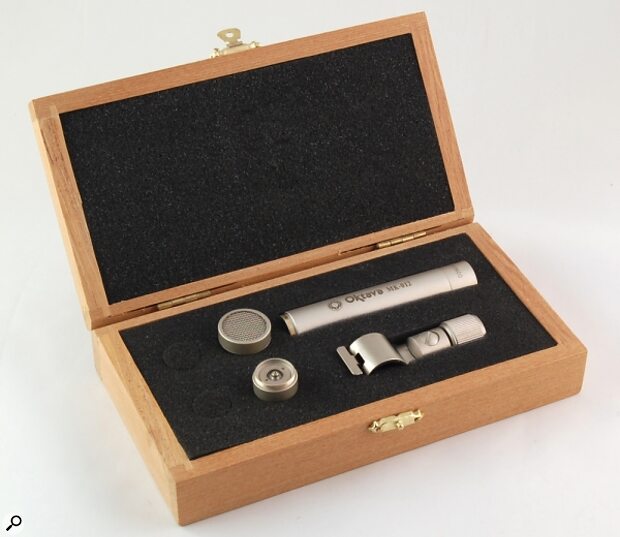Oktava have created a storm in the microphone marketplace with the MK219. Now they hope to follow up their initial success with the MK012, designed for both studio and broadcast use.
Oktava's MK219 (reviewed SOS April '94) has caused quite a stir in the microphone world. It delivers a tonal performance to challenge mics which its own list price wouldn't even pay the VAT on, despite a standard of cosmetic finish that would make a Trabant engine casting look like a work of art. In that respect, Oktava's MK012 microphone couldn't be more different, being well‑engineered and very conservatively styled. As tends to be the case with ex‑eastern bloc microphones, the technology is largely 'borrowed' from the major mic manufacturers, but implemented in a slightly less refined manner.
The basic package comprises the mic body plus a stand clip, a 10dB pad and three individual capsules providing cardioid, hypercardioid and omnidirectional pickup patterns. A figure‑of‑eight capsule might have been more useful than two cardioid types — the importers tell me they're already looking into the possibility.
The capsules screw directly to the microphone body, where the thread‑to‑thread contact forms the negative signal conductor, and a central pin in the capsule mates with a sprung contact in the microphone body to carry the positive signal. If the 10dB pad is needed, it fits between the mic body and the capsule. Low noise, transformerless preamplifier circuitry is housed in the mic body, and can be driven from any nominal 48V phantom powering source. Unlike vocal mics, where the response is often deliberately coloured, the 012 has a nominally flat frequency response extending from 20Hz‑20kHz — though that's not to say that it isn't also a good vocal mic.
I heard this mic as part of a comparative test undertaken at the Gateway School of Recording in Kingston, where they have a grand piano set up in the middle of a large studio. Several mics were set up on boom stands about four feet away from the open piano lid, and positioned as closely together as was practical. We then repaired to the control room and scrutinised the various mics while someone played the piano. Though every mic produced a slightly different sound, the 012 stood up surprisingly well, delivering a clean, open sound with plenty of depth. Further studio tests revealed that the mic also works well with acoustic guitars and, indeed, it should suit any application requiring an honest, natural result. As you might expect, there's a reasonable degree of consistency between the sounds produced by the three available capsules. Two of these mics would make a versatile and affordable stereo recording kit, though M&S recording is not possible, because there's no figure‑of‑eight capsule.
Because this mic doesn't produce a coloured response, it would be fine for classical and choral work, as well as for recording smaller ensembles (for example, folk, chamber, or ethnic music). Its small size also makes this mic suitable for broadcast, sound‑for‑picture, installation, and theatre situations.
Summary
Given the low cost, the MK012 is a surprisingly competent and flexible microphone, suited to virtually any application where an accurate sound is sought. In the project studio, it can handle vocals and all manner of acoustic instruments, and should also function as a top class sampling mic. A stereo pair would make great drum overheads or location recording mics, and their relatively high sensitivity means they could also be used for gathering sound effects on location, without noise posing too much of a problem.
There are plenty of professional mics already available which do essentially the same job as the MK012, but none at anything like the price. Traditionally, project studios go for large diaphragm capacitor vocal mics, but given its very attractive price, the MK012 makes a welcome and useful addition to the mic locker. The MK012 is optionally available with an elastic suspension cage, a phantom power supply, foam windshield and cable, all in a wooden case. Given that this costs only £50 or so more than the basic package, it adds further value to what is already a bargain.
Brief Specification
- Frequency Response: 20Hz‑20kHz (The useful response extends well above this)
- Sensitivity: 10 mV/Pa
- Power: Phantom power (48V nominal)
- Output Impedance: 300 ohms nominal
- Standard Accessories: Plastic case with mic body, hypercardioid, cardioid and omni capsules plus mounting clip
Pros
- Low Cost.
- Good Performance.
- Versatility.
Cons
- No figure‑of‑eight capsule.
Summary
A great all‑round capacitor mic at a real knock‑down price. Two sets would form the heart of a really nice stereo rig.
Information
Oktava MK012 £352.50; box set including extra accessories £411.25. Prices include VAT.

